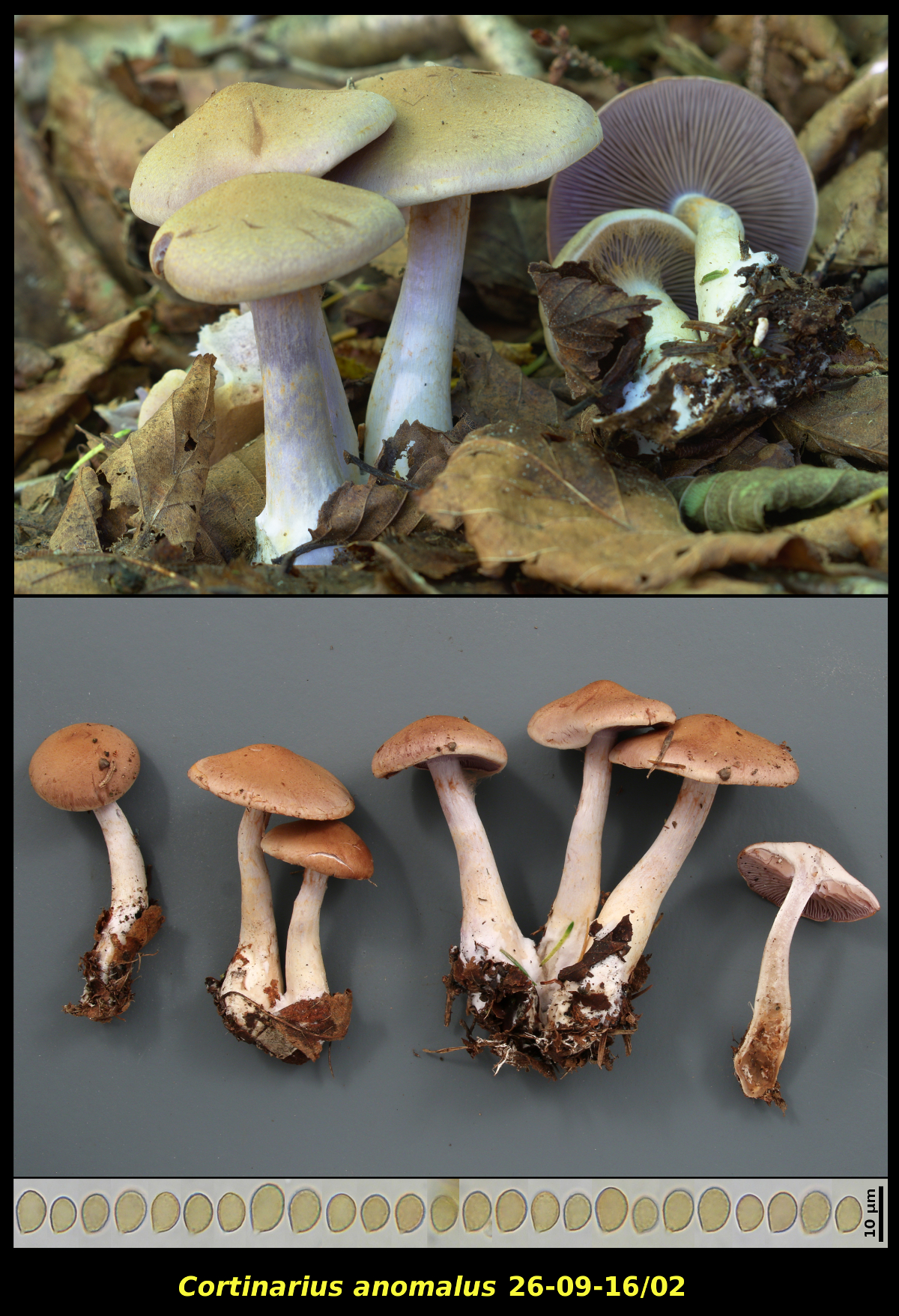Fleshy Fungi of New Brunswick >>
Cortinarius anomalus
Cortinarius anomalus (Fr.) Fr.

Gregarius (several) in soil and litter under Abies balsamea and Betula alleghaniensis, Campobello Island, New Brunswick (26-09-16/02).
Pileus convex at first, expanding to plano-convex, with a low broad umbo, orange brown (HSV45:40-50:90), possibly hygrophanous but only weakly so, glabrous to minutely pruinose, slightly corrugated at the margin, dry, 28-67 mm in diameter. Stipe narrowly clavate, white, perhaps with a slight violet tint at the apex, with appressed bands of yellow orange veil remnants, dry, 60-85 X 7-9 mm. Lamellae pale violet (HSV280:15-20:90-100), adnate, close, not marginate. Flesh mostly white but with some medium grey (HSV70-80) above the lamellae and at the stipe apex, lacking a distinctive odour.
Basidiospores ellipsoidal to subdacryoid, 5.9-8.6 X 4.4-5.8 μm, Q = 1.28-1.52 (average[25]: 7.0 x 5.1 μm, Q = 1.38), moderately dextrinoid.
Cortinarius anomalus is characterized in the field by its slightly clavate stipe, yellow universal veil and purpleish blue colours of the stipe and lamellae. The colour of the veil and blue colours of lamellae and stipe are often difficult to see if only mature specimens are available. However, the very broad basidiospores are a clue to where it should be classified. It is very closely related to C. caninus, which differs in having a brown universal veil.
The above two photographs differ greatly, although they are of the same basidiomata. The upper photo, taken in the field, shows the yellow universal veil material but almost completely lacks the brown colour of the cap as recorded in the field notes. The lab photo shows the brown colours, somewhat more saturated than described in the notes, and may be a more accurate representation of the original collection. Since some photographs available online resemble our field photo we have decided to include it here.
Photograph: D. Malloch (26-09-16/02 - field photo) and Roger Smith (26-09-16/02 - lab photo).